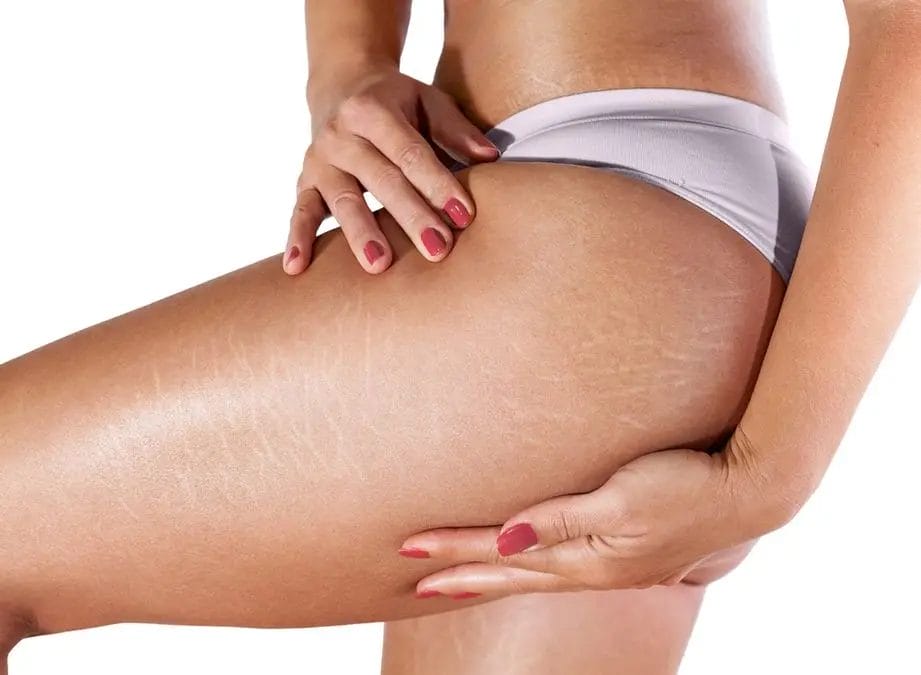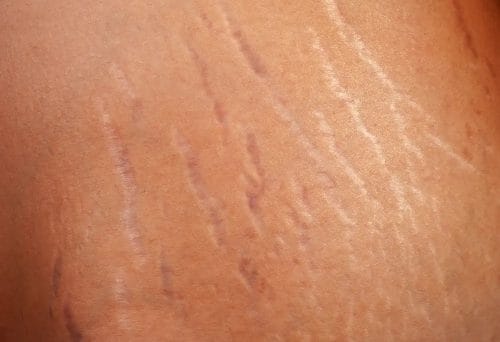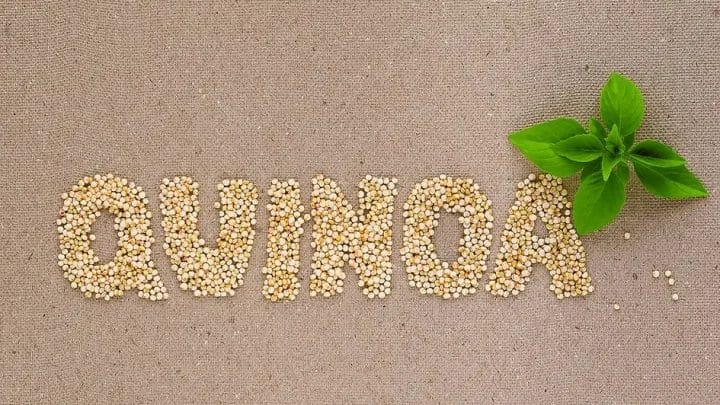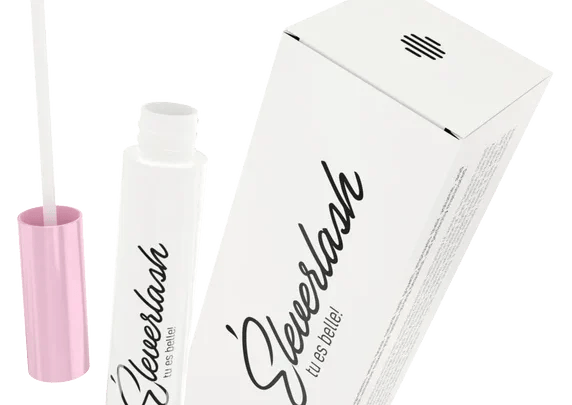
How to get rid of stretch marks – a small compendium of effective methods
Stretch marks are one of the most bothersome skin imperfections. They do not look very aesthetic and interfere with the advantages of our silhouette. What’s worse, the process of removing stretch marks is usually long and demanding, not always brings the desired results. Stretch marks are the result of a rupture of collagen fibers and are a form of scarring, which is why it is so difficult to restore the former smooth, uniform structure of the skin in the places where they occurred. Fortunately, there are a number of methods that can be used to stimulate intensive skin regeneration and reduce unattractive wrinkles. How to activate skin recovery? How to get rid of stretch marks? You will read in this article.
Contents
- 1 What are stretch marks and what are their characteristics?
- 2 How do stretch marks form and in which places do they most commonly appear?
- 3 Who is most likely to get stretch marks? Causes of stretch marks
- 4 How to win the fight against stretch marks? First of all, prevent their formation!
- 5 How to prevent stretch marks during and after pregnancy?
- 6 Home remedies for stretch marks
- 7 Other methods of removing stretch marks
What are stretch marks and what are their characteristics?

Stretch marks are characteristic scars formed as a result of rapid stretching of the skin. They differ from ordinary scars in that they are not the result of mechanical injury, but the processes taking place in the body, such as metabolic or hormonal. Stretch marks appear in larger clusters, rather than individually. Most often they take the form of striations (resembling tiger skin) or parallel lines.
Depending on the extent to which the skin is stretched, stretch marks may cover smaller or larger areas and be more or less pronounced. And depending on the time that has elapsed since the appearance of stretch marks, they may vary in color and degree of protrusion (for example, fresh stretch marks are more pronounced and have a more intense color, and are often accompanied by swelling and pain).
Stretch marks formation and development is a process that takes place in two stages:
- Stage one of stretch marks (red stretch marks) – this is the initial, inflammatory phase, usually lasting several months. In this phase stretch marks are newly formed, convex, prominent, parallel to each other, red, violet or purple in color, and the structure and appearance resemble fresh scars, somewhat like after a cut wound. They may occur along with swelling, itching, burning, and pain. Dermatologists are often of the opinion that removing stretch marks in this first stage is easier than in the second stage.
- Stage two of stretch marks (white stretch marks) – the atrophic phase, in which collagen and elastin fibers are rebuilt and scarring occurs. Stretch marks fade, become less visible, from reddish to white. They are slightly concave and may be slightly wrinkled. Although at this stage stretch marks are less visible than in the first phase, they are still noticeable (collagen and elastin fibers are regenerated, but their structure remains partially deformed).
How do stretch marks form and in which places do they most commonly appear?
Stretch marks are a defect of beauty mainly associated with women, however this problem also affects men. When we gain weight quickly and intensely, as well as in any other situation where our body expands rapidly, the skin undergoes increased stretching to adapt to the new figure. As a result, the skin becomes tighter and tighter, and the collagen and elastin fibres that make up its structure weaken, and some break down completely.
Despite the fact that collagen fibres are very flexible by nature, they can be broken as a result of rapid and dynamic changes in the proportions of our figure. Stretch marks therefore appear in those parts of the body that undergo intense growth in a short period of time. In this connection, the most frequently observed are:
- Stretch marks on the abdomen,
- Stretch marks on the thighs,
- Stretch marks on the buttocks,
- Stretch marks on breasts.
However, stretch marks on shoulders, back stretch marks, knee stretch marks and calf stretch marks are less frequently observed.
Who is most likely to get stretch marks? Causes of stretch marks
Our skin is by nature extremely resilient and stretchy, and therefore is able to retain a high degree of elasticity, even when we gain a few extra kilos in a few months. However,significant and happening in a very short time change can result in rupture of collagen and elastin fibers and appearance of stretch marks. Pregnant women, for example, are exposed to this effect, but not only.
The main causes of stretch marks:
- Rapid, intense weight gain (e.g. due to a change in diet to a more caloric one, a significant reduction in the level of physical activity, disruptions in hormonal balance, metabolic disorders)
- Frequent, rapid changes in body weight, alternate weight gain and loss (e.g. as a result of introduction of strict weight loss diets, and then returning to previous eating habits)
- Pregnancy (stretch marks during pregnancy and stretch marks after pregnancy are the result of rapid expansion of the abdomen and intense skin stretching associated with growth and development of the fetus)
- Rapid bone growth in adolescents
- Rapid growth of breast glands in teenage girls
- Strongly increased levels of cortisol, i.e. the stress hormone (high levels of this hormone contribute to the disruption of fibroblasts, i.e. the cells responsible for the production of collagen, as a result collagen fibers are weaker and break more easily)
- Hormonal fluctuations (e.g. during the menopause)
- Taking steroids.
- Bodybuilding and competitive sports (intensive training contributes to increased muscle tissue growth, which in turn leads to the formation of stretch marks).
- Inadequate skin care (insufficient hydration and lubrication of the skin may contribute to more frequent tearing of collagen and elastin fibres and facilitate the formation of stretch marks)
- Vitamin and mineral deficiencies in the diet
- Endocrine disorders
- Genetic predisposition to the formation of stretch marks
See also: Fat burners ranking
How to win the fight against stretch marks? First of all, prevent their formation!
Stretch mark removal can be a difficult and lengthy process, so the first thing we should do is to reduce to a minimum the risk of their formation in the future. Whether we are the owners of prominent, advanced stretch marks or just have delicate, almost imperceptible changes of this type on the skin, it will be extremely useful to introduce preventive measures that will prevent the aggravation of stretch marks and their appearance in other parts of the body.
So what should we do? The main rule to prevent stretch marks is to control body weight. It is worth checking our weight and body circumference on a regular basis or simply observing in the mirror whether the level of fat tissue is not increasing. Maintaining a healthy weight and not getting fat quickly will help avoid unnatural stretching of the skin and tearing of collagen fibres.
The best method to avoid sudden onset of weight gain is to maintain a healthy diet with appropriate calories and to lead an active lifestyle. In order to prevent stretch marks, it is advisable to increase the amount of products rich in vitamins and minerals important for the skin (e.g. vitamin A, vitamin E, zinc). These are mainly fruit and vegetables, but also grains, cereals, bran, nuts, almonds, vegetable oils, fish, cheese and groats.
How to prevent stretch marks during and after pregnancy?

How not to get stretch marks during pregnancy? First of all, we should avoid eating for two. An increase in body weight of around 10 kg during pregnancy is normal, but 20 or 25 kg is definitely excessive. You should take care of a valuable, healthy diet, eat in such a way that you don’t go hungry, don’t deny yourself meals, but also avoid uncontrolled eating, overeating and consuming hundreds of excess calories.
In a situation when we are tormented by an exuberant appetite, it is worth reaching for healthy snacks instead of fattening dishes, sweets or crisps.
The period immediately after giving birth is also important. At this time the metabolism speeds up, so it is the best moment to take care of returning to the former weight. A light, healthy and nutritious diet plus moderate physical activity will help us quickly get back to our former shape and reduce the risk of stretch marks.
On the other hand, you should not use too restrictive slimming methods after pregnancy. All drastic diets and strenuous workouts are not recommended. Rapid, significant weight loss can do us more harm than good. The process of slimming down after pregnancy should take place at a moderate pace so that our skin can slowly, gradually adjust to the new figure.
Another important issue is proper hydration of the body. Systematically providing the body with large amounts of water, we support our skin from the inside. A high level of body hydration makes our skin more resilient, better moisturised, firmer and more resistant to damage.
During and after pregnancy we should also take care of increased skin care by regularly rubbing in creams and lotions with properties that strengthen collagen fibers, improve skin elasticity, oiling and moisturizing. An excellent support for the skin exposed to stretching will be a special cream for stretch marks, which, in addition to protecting and improving the condition of the skin, will have regenerative properties.
Controlling weight during pregnancy, not falling into a sedentary lifestyle, healthy diet, hydrating the body, gradual slimming down after pregnancy and using appropriate cosmetic preparations are ways to avoid stretch marks or reduce their severity and visibility.
Home remedies for stretch marks
Diet for stretch marks
Stretch mark removal is a process in which the best results can be achieved by simultaneously acting on the skin from the outside and from the inside. The latter consists mainly of a proper diet. In this connection, it is extremely important to eliminate junk, highly processed food from the menu, and introduce natural food rich in nutrients.
For example, it is worth introducing to the menu increased amounts of products containing vitamin K. It stimulates the process of skin recovery and guards the correct level of its elasticity. It can be found in strawberries, tomatoes, dairy products, eggs, and especially green vegetables (e.g. broccoli, kale, spinach, lettuce, parsley, zucchini, chard, cucumbers, sorrel).
The menu should also include large amounts of products rich in vitamin E, the so-called youth vitamin. It can be found in seeds, whole grain products, vegetable oils, dairy products, liver, olives, melons, spinach, nuts, almonds.
In improving the elasticity of the skin will also help us zinc. It is present in significant amounts in such foods as: nuts, sprouts, bran, legumes, parsley, pumpkin seeds, sunflower seeds, fish, meat, liver, buckwheat groats, seafood, green vegetables, yellow cheese.
It is also worth reaching for products rich in vitamin C, which stimulates collagen synthesis and supports skin regeneration. An interesting method for stretch marks is an external and internal treatment with carrot juice. It is extremely rich in vitamin C and other useful skin minerals and vitamins (e.g. vitamin A). It tastes great, at the same time revitalizes and nourishes our body. Used externally (e.g. in combination with sea salt) fights imperfections, makes the skin more elastic and enhances the repair processes occurring in the skin.
Homemade cosmetics for stretch marks
A good home remedy for stretch marks is an aloe vera treatment (fresh aloe vera leaf juice should be regularly rubbed into the affected skin). Aloe stimulates the skin regeneration process, increases its hydration level and provides it with many valuable nutrients.
Coconut oil for stretch marks is also very popular. It contains valuable antioxidants, acts anti-aging, accelerates regeneration of damaged skin.
When listing home remedies for stretch marks, it is impossible not to mention such natural remedies helpful in skin reconstruction as:
- egg white foam mixed with lemon juice,
- potato juice,
- onion juice,
- cocoa butter mixed with bran,
- flaxseed oil,
- rose oil,
- argan oil,
- cane sugar and olive oil scrub.
The chosen ingredient or mixture is applied on the skin affected by stretch marks, wait a few minutes, rinse. When using only oils, rinsing is unnecessary. Home treatments for stretch marks should be carried out systematically, preferably daily, for a minimum of 4 weeks.
Other methods of removing stretch marks
Ready-made preparations for stretch marks
Looking around for effective, yet convenient and practical ways to get rid of stretch marks, we can not help but notice a number of ready-made products designed specifically to correct this unsightly skin imperfection. Of such purchased preparations for stretch marks, the most popular are: creams, lotions, ointments and gels for stretch marks.
They contain a wide range of active substances (usually plant extracts and oils selected specifically for the needs of the skin) with repairing properties, stimulating collagen and elastin production, brightening pigmentation, smoothing, moisturizing, protecting, improving overall skin tone, nourishing and accelerating the disappearance of scars. One of the most advanced and best-rated preparations of this type is the Revamin Stretch Mark stretch mark cream.
While using home methods and ready-made specifics, it is worth supporting oneself with a healthy diet and active lifestyle. Both these factors not only improve the condition of our skin, but also have a positive impact on our health and well-being.
Stretch mark treatments
If we have more free time, we can also take advantage of professional treatments in beauty salons or aesthetic medicine offices. Microdermabrasion, which involves exfoliation of the outer layers of the epidermis, is helpful in removing stretch marks. The effect is to improve skin firmness and smoothness.
Another treatment for stretch marks is needle mesotherapy, which involves applying special nutrients and regenerating substances directly into the dermis. Stretch marks are also combated by using fractional laser. The effect of the treatment is the elimination of the outer layers of skin, reducing the visibility of scars and stimulation of collagen production. Chemical peeling using glycolic acid can also help reduce stretch marks.



